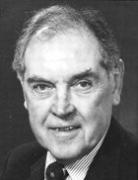|
|
||||||||||||||||||||||||
 |
Featured person
Recently added |
Roger Mulholland (1740 - 1818): |
||||||||||||||||||||||
Roger Mulholland was perhaps the most significant architect-builder (at that time these activities were not really seen as separate) working in Ulster in the late eighteenth and early nineteenth centuries, though relatively little is known for sure about him.
He was born somewhere in Derry, and may have worked for, or with, Michael Priestley, a prominent architect in the North-West, though similarities of style (the “Gibbsian”) may be coincidental. By 1770 he had settled in Belfast and married there. He was an early member of the Linen Hall Library and donated fine books such as the first three volumes of the Vitruvius Britannicus, an illustrated book by the Scottish architect Colen Campbell, known for its illustrations of neo-Palladian buildings. He also appears on a 1781 muster roll of the Belfast Volunteers, though noted as a “very bad attender”.
There were considerable opportunities for competent (better than that) architect-builders in Belfast, given that Arthur Chichester, fifth Marquess of Donegall, was very concerned to expand and improve the town. It is certain that he was responsible for the First Presbyterian Church in Rosemary Street, with its distinctive elliptical design: a document survived which explicitly stated this. His interest seems to have been to a large degree commercial, as he would lease land from Donegall with an undertaking to build a certain number houses on it, then would build more. CEB Brett, the outstanding architectural historian, has estimated that many of these would not necessarily have been especially of architectural distinction. He seems to have had a major role in developing a building which was known as “the Castle” although clearly from an engraving, it was no such thing. He also worked on the House of Correction near what is today Fisherwick Place, and possibly the White Linen Hall (“white” referring to the colour of the linen, not the Hall). It is known that he contributed £100 to its construction. It is also accepted that he erected several more impressive houses in today’s Donegall Street, one of which was occupied for many years by the distinguished Dr James McDonnell.
Outside Belfast, the Non-Subscribing Presbyterian Church at Dunmurry is consistent with his Gibbsian style; the Old Congregation Presbyterian Church at Randalstown is very similar to the elliptical design Mulholland deployed for the Rosemary Street church in Belfast; and the First Presbyterian Church at Crumlin, County Antrim, seems clearly inspired by the same church.
By his will, signed on 15 July 1818, he left property worth over £3835, a considerable enough sum, certainly well into six figures in 2012.
| Born: | 1740 |
| Died: | 1818 |
| Richard Froggatt |
| Bibliography: CEB Brett: Roger Mulholland, Architect, of Belfast, 1740-1818, Ulster Architectural Society, 1976; Dictionary of Irish Biography; CEB Brett: Buildings of County Antrim, Belfast 1996; Dictionary of Irish Architects |


Home | Our Policies | Plaques | Browse | Search | Sponsors | Links | Help | Contact
Privacy & Disclaimer | Cookie Policy | Site Map | Website Design By K-Point
© 2024 Ulster History Circle









